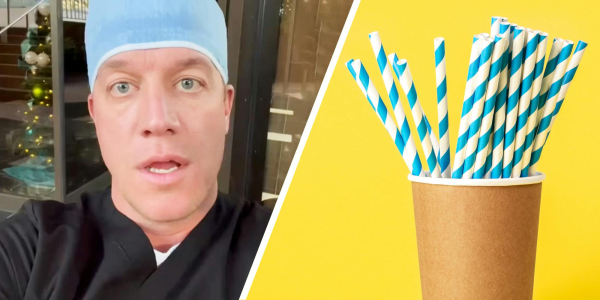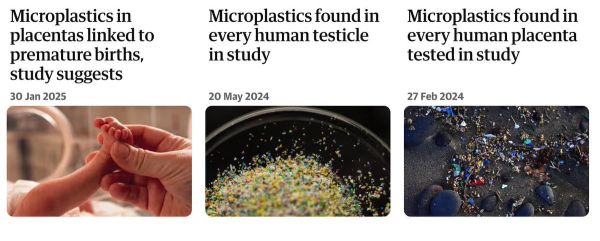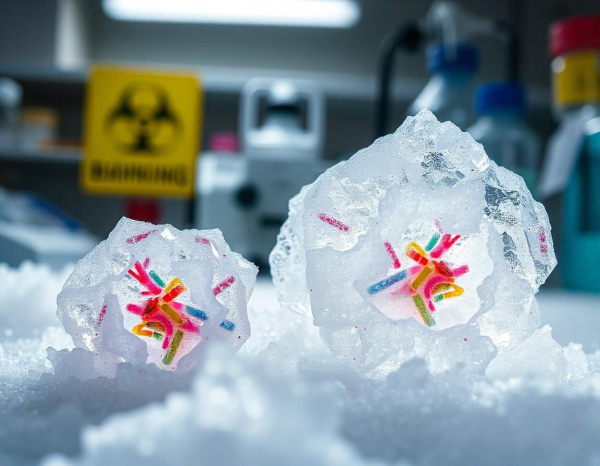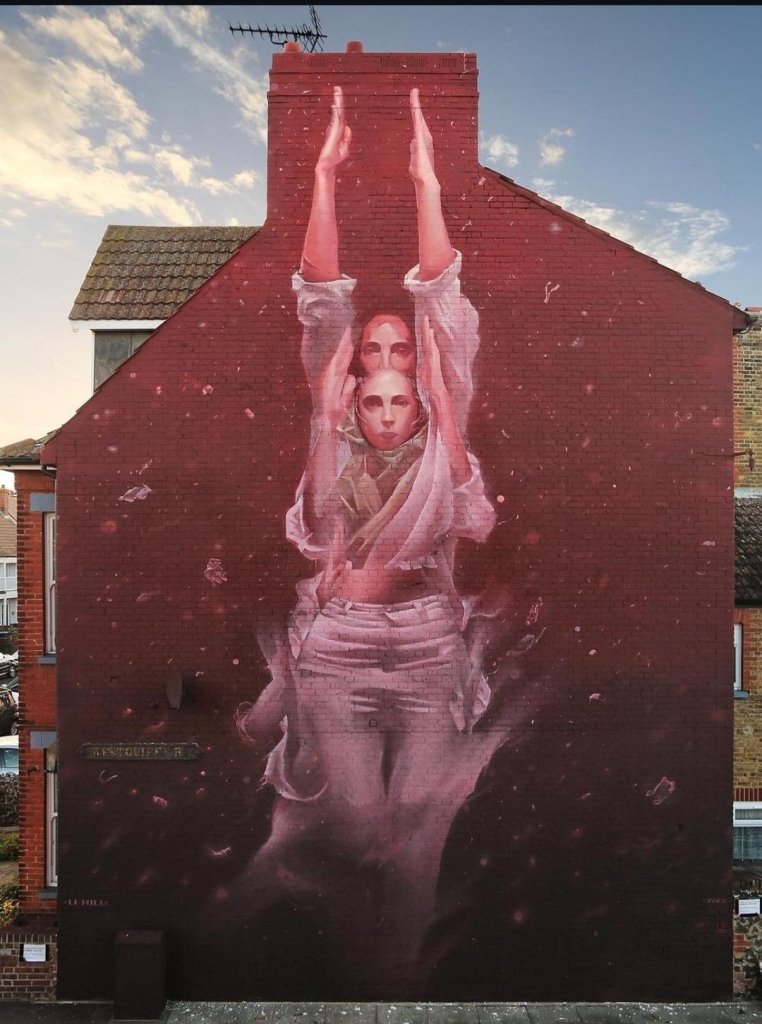Suche
Beiträge, die mit Microplastics getaggt sind
Mattel spokesperson: What you say is true. There really is a little bit of Barbie in everyone. (Drops mic, walks off)
#humor #microplastics #barbie #media
Thinking that individual consumers can solve global problems is very misleading. The vast majority of pollutants comes from institutional neglect not individual.
@Some_Emo_Chick #Pollution #Ocean #microplastics
Kitchen items—sponges, blenders, kettles—are abundant sources of microplastics that we all consume
https://www.scientificamerican.com/article/how-microplastics-get-into-our-food/
#news #science #health #medicine #environment #plastic #microplastics
#GeorgeMonbiot
#Water companies let waste disposers, for cash, dump their loads into #sewage farms. When it is recklessly used as fertiliser, we are all at risk
https://www.theguardian.com/commentisfree/2025/mar/21/tonnes-sludge-uk-farmland-sewage-farms-toxins-food-system #science #environment #pollution #pfas #microplastics
#science #microplastics #photosynthesis

Microplastics Are Disrupting Photosynthesis, And The Impact Could Be Huge : ScienceAlert
We know microplastics are everywhere – but what's less clear is the harm they might be doing.David Nield (ScienceAlert)
#GreenSocialist #GreenParty #EcoSocialism #Socialist #Marxist #Revolution #Peace #Ecology #SocialJustice #Democracy #Education #DualPower #Election #Vote #Voting #Politics #Electoral #ElectoralReforms #Organizing #Organize #Reading #Discussion #Learning #Worker #Workers #Labor #WorkersRights #Union #Unions #LaborRights #UnionsRights #HumanRights #MicroPlastics #Plastic
Researchers say problem could increase number of people at risk of starvation by 400m in next two decades.
https://www.theguardian.com/environment/2025/mar/10/microplastics-hinder-plant-photosynthesis-study-finds-threatening-millions-with-starvation?utm_source=dlvr.it&utm_medium=bluesky&CMP=bsky_gu
#Pollution #Microplastics
#Press
Scientists have discovered microplastics in the snow near some of Antarctica's deep field camps, revealing how far-reaching plastic pollution has become. While not new, it's the first time these tiny pieces of plastic have been found in remote locations.
https://linkinghub.elsevier.com/retrieve/pii/S0048969725001779
#antarctica #microplastics #pollution #nature #science #engineer #media #chemistry #tech #news
#Sustainability #HealthAwareness #Microplastics #DrJoshRedd #AlternativesToStraws
https://www.dailydot.com/news/doctor-warning-paper-straws/

Are Paper Straws Dangerous?
A doctor (@drjoshredd) has gone viral on TikTok after claiming that there's a hidden danger to paper straws.Charlotte Colombo (The Daily Dot)




![[ImageSource: Steve Gibbs, BAS]
A view over the Ellsworth Mountains, West Antarctica.
Dr. Emily Rowlands, a marine ecologist at British Antarctic Survey (BAS) and co-author of the paper says, "With these developing techniques, we're now able to analyze microplastics of a much smaller size than before. In fact, we found microplastic abundance in these snow samples to be 100 times higher than in previous studies of Antarctic snow samples."
Dr. Clara Manno, an ocean ecologist at British Antarctic Survey, adds, "We think this means that there are local sources of plastic pollution, at least when it comes to polyamide. This could come from outdoor clothing, or the ropes and flags that are used to mark safe routes in and around the camp.
"We need to do more research to fully understand the sources of microplastic pollution in Antarctica—how much of it is local, and how much is transported over long distances so we can explore how best to reduce this plastic pollution in one of the most pristine places on Earth."
Some research suggests that microplastics could affect the snow's albedo (how much light it reflects) and how quickly it melts. It can also be transported to areas of ecological importance. [ImageSource: Steve Gibbs, BAS]
A view over the Ellsworth Mountains, West Antarctica.
Dr. Emily Rowlands, a marine ecologist at British Antarctic Survey (BAS) and co-author of the paper says, "With these developing techniques, we're now able to analyze microplastics of a much smaller size than before. In fact, we found microplastic abundance in these snow samples to be 100 times higher than in previous studies of Antarctic snow samples."
Dr. Clara Manno, an ocean ecologist at British Antarctic Survey, adds, "We think this means that there are local sources of plastic pollution, at least when it comes to polyamide. This could come from outdoor clothing, or the ropes and flags that are used to mark safe routes in and around the camp.
"We need to do more research to fully understand the sources of microplastic pollution in Antarctica—how much of it is local, and how much is transported over long distances so we can explore how best to reduce this plastic pollution in one of the most pristine places on Earth."
Some research suggests that microplastics could affect the snow's albedo (how much light it reflects) and how quickly it melts. It can also be transported to areas of ecological importance.](https://friendica-leipzig.de/photo/preview/600/636313)
